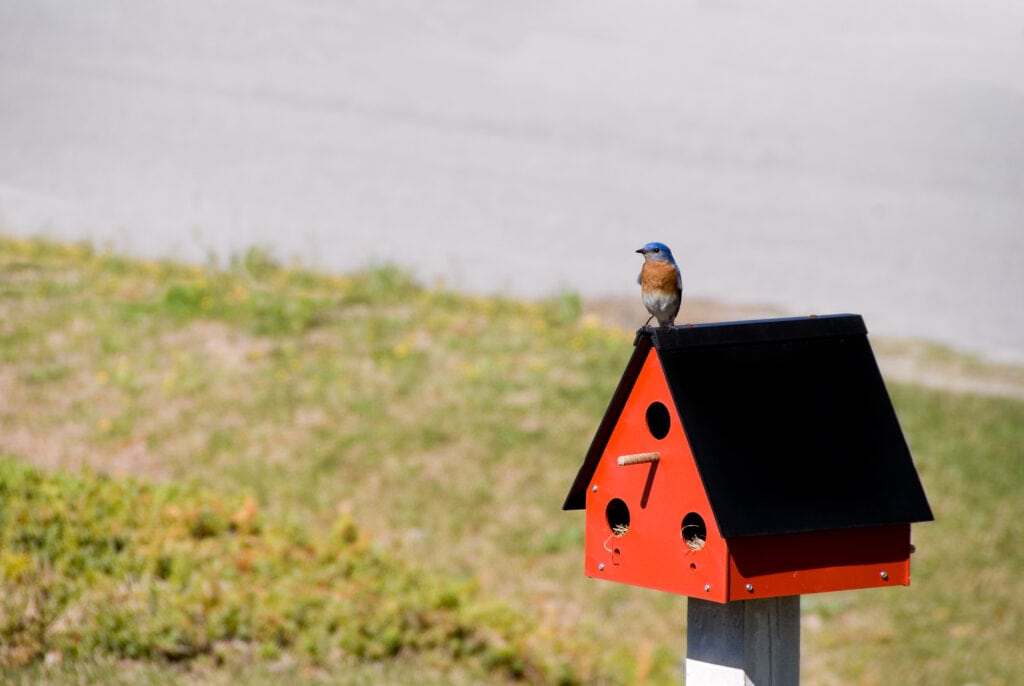In a previous article from earlier in the season, I wrote about how the fascinating relationship between humans and Purple Martins. Purple Martins are cavity nesters. This means that they are unable to build a nest without first finding a suitable hole or crevice. They cannot excavate these holes themselves and rely on holes that have been formed naturally or by other animals, such as woodpeckers or humans. In fact, humans have been supplying Purple Martins with birdhouses for centuries, beginning with Native American tribes which housed the birds in hollowed out gourds. Today, almost all Purple Martins nest almost exclusively in man-made birdhouses. This relationship is emblematic of the unique challenges that cavity nesting birds face.
Related Article: Phillip Island Residents Limit Artificial Lights to Aid Shearwater Chicks
While this often brings cavity nesters and humans closer and may build treasured relationships between the two, this also means that cavity nesting birds face immense challenges as habitats diminish. The removal of dead trees, for example, is a fairly sensible land management practice from a human standpoint. For cavity nesting birds, it creates shortages of appropriate nest sites.
The Eastern Bluebird is great case study for understanding this unique relationship and the challenges that accompany it. Once widespread, Eastern Bluebirds began experiencing a sharp population drop in the twentieth century, culminating in the loss of about 90 percent of their population before conservation groups began to take notice in the 1960s. For Eastern Bluebirds, land management practices and habitat encroachment were a major factor, but the presence of invasive species like European Starlings and House Sparrows sealed the deal. While European Starlings and House Sparrows are perfectly capable of excavating their own nests, these birds are happy to occupy the man-made and naturally occurring cavities which Eastern Bluebirds desperately need to survive. They also tend to be much more aggressive and assertive than the Eastern Bluebird.
In the 1960s and 1970s, conservation groups observed this crisis and came to the conclusion that supplying birdhouses was not enough; the invasive birds would simply chase the Eastern Bluebirds out of them. Instead, they devised a solution involving the installation of special nest boxes designed for Eastern Bluebirds along so-called “bluebird trails.” The nest boxes have entrances that are too narrow for starlings, reducing some of the competition. The trails are an ideal habitat for these birds and many of them are monitored by conservation groups.
These measures were a huge success. Today, Eastern Bluebirds are not considered to be endangered or even threatened via the Endangered Species Act. Furthermore, their populations are trending up and continue to increase even as global bird populations are sinking. The Eastern Bluebird represents the stewardship relationship that humans have with cavity nesters and the good that this relationship can do when thoughtful measures are enacted.
Popular Article: Parrots Make Virtual Friends to Combat Loneliness

